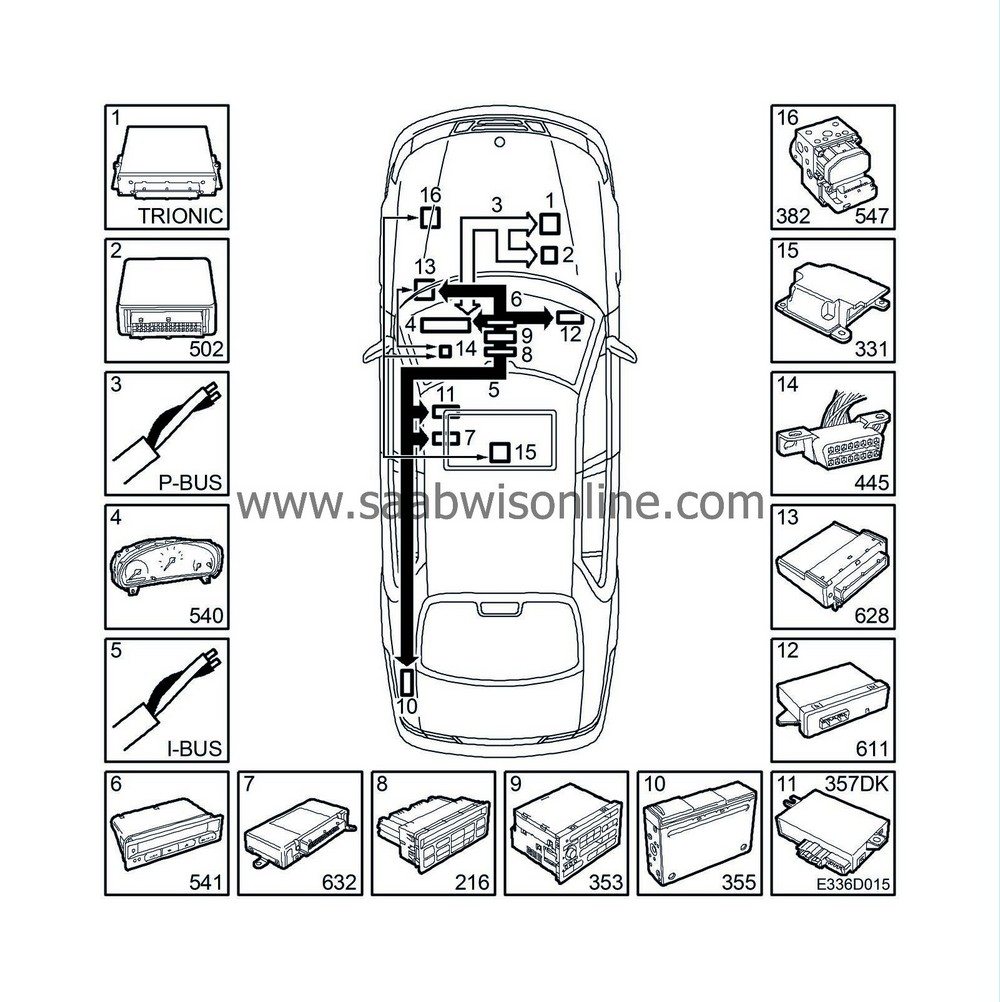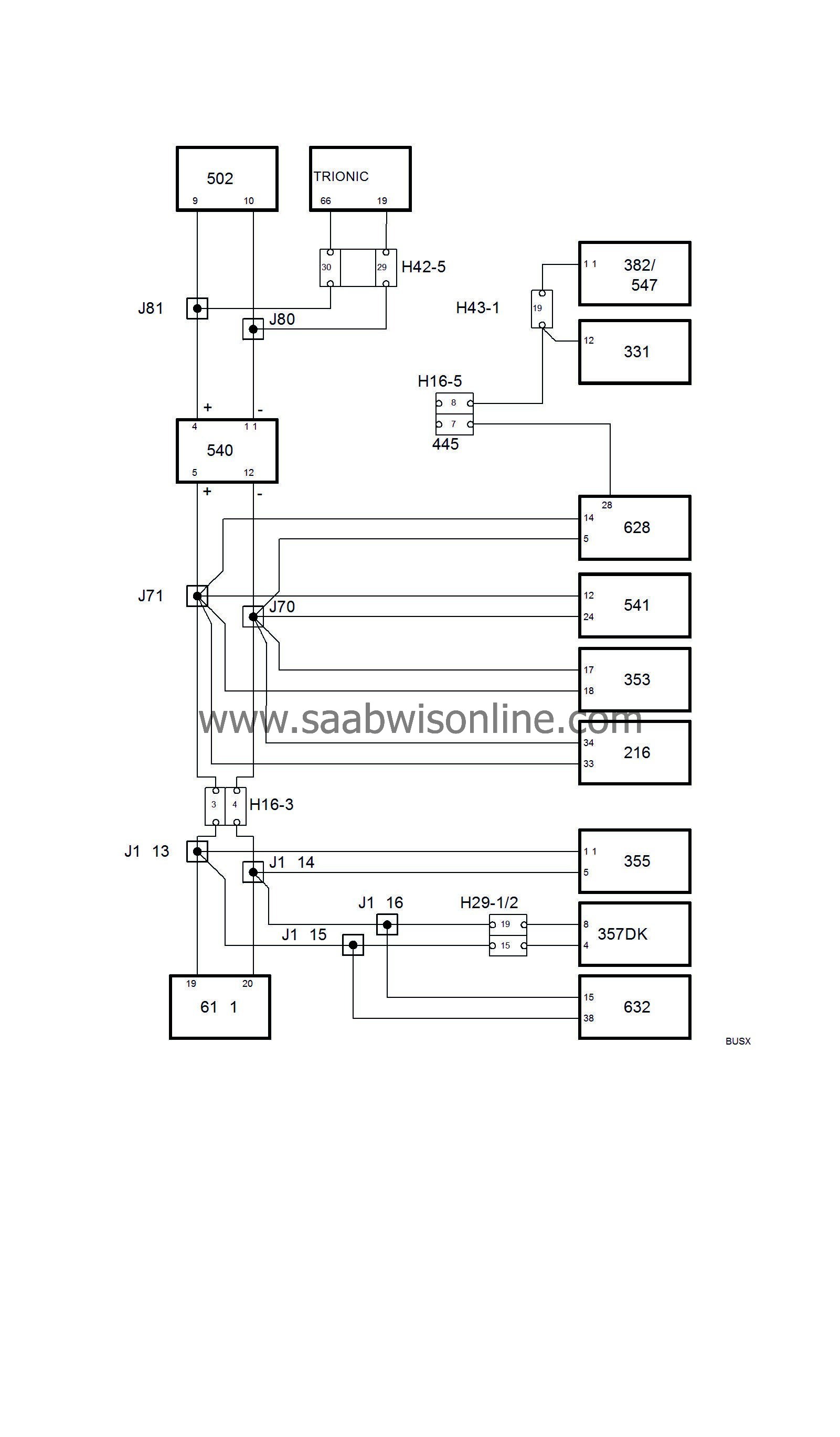System overview
| System overview |
| System overview, components |

| 1. |
Trionic, engine management system (430/589)
|
|
| 2. |
TCM (Transmission Control Module), control module for automatic transmission (502)
|
|
| 3. |
P bus (Powertrain bus)
|
|
| 4. |
MIU (Main Instrument Unit) (540)
|
|
| 5. |
I bus (Instrument bus)
|
|
| 6. |
SID (Saab Information Display) (541)
|
|
| 7. |
TWICE (Theft Warning Integrated Central Electronics) (632)
|
|
| 8. |
ACC (Automatic Climate Control) (216)
|
|
| 9. |
Audio system, main unit (353)
|
|
| 10. |
CDC (CD changer) (355)
|
|
| 11. |
PSM (Power Seat Memory) (357Dk)
|
|
| 12. |
PMM (Power Mirror Memory) (611)
|
|
| 13. |
DICE (Dashboard Integrated Central Electronics) (628)
|
|
| 14. |
Data link connector (H16-5/445)
|
|
| 15. |
Airbag (SRS) (331)
|
|
| 16. |
ABS (Anti Block System)/TC-ABS (547/382)
|
|
| System overview, brief description |

Background
An I bus (Instrument Bus) which connects the MIU, SID, ACC and Audio system to each other has been a feature of the Saab 900 since M1994. This bus allows large volumes of information to be exchanged between the control modules using only two leads. The diagnostic tool is connected direct to the bus.P bus and I bus in the Saab 9-5
On the Saab 9-5, all control modules except those for the ABS and SRS are connected to a bus.The two powertrain systems, Trionic and TCM, are not connected to the I bus, however. These systems need much faster communication facilities so that no delays will be noticeable, such as in connection with torque limitation when changing gear.
The Trionic and TCM are therefore connected by means of a separate bus called the P bus (Powertrain Bus). The communication speed (data transfer rate) of the P bus is ten times faster than that of the I bus.
In addition, the P bus is connected to the MIU. The MIU ensures that information which is available on one bus is also available on the other.
The diagnostic instrument is not connected direct to the bus but communicates via the DICE, one of the control modules connected to the I bus, and so has access to all control modules connected to the bus.
Vehicle speed is an important item of information for many control modules. Since the ABS is not connected to a bus, the vehicle speed signal goes to the MIU via a cable of its own. The MIU then sends out the vehicle speed information on the buses.



